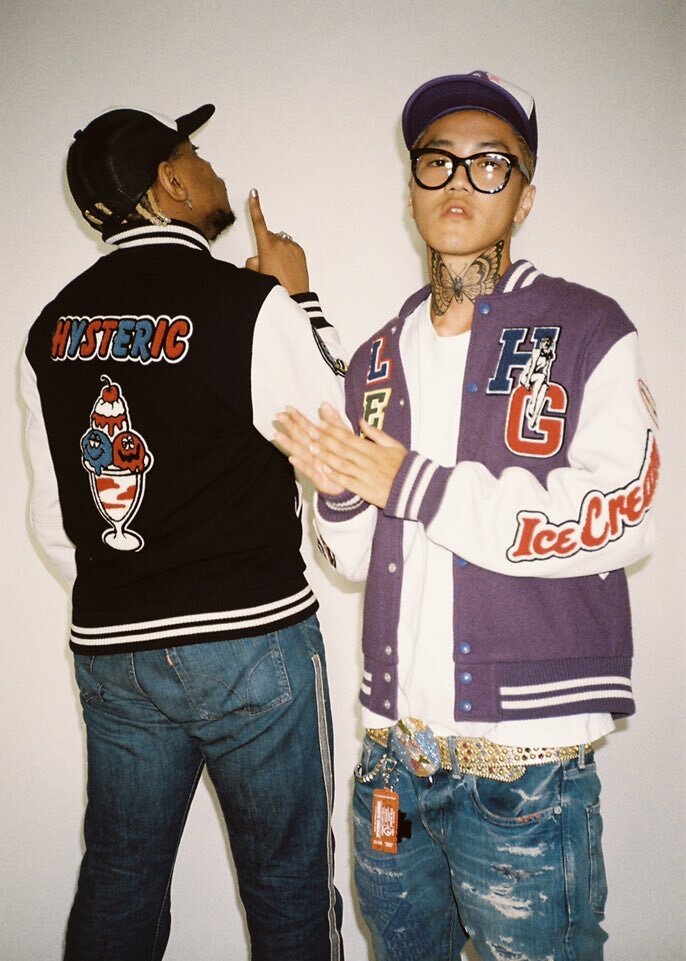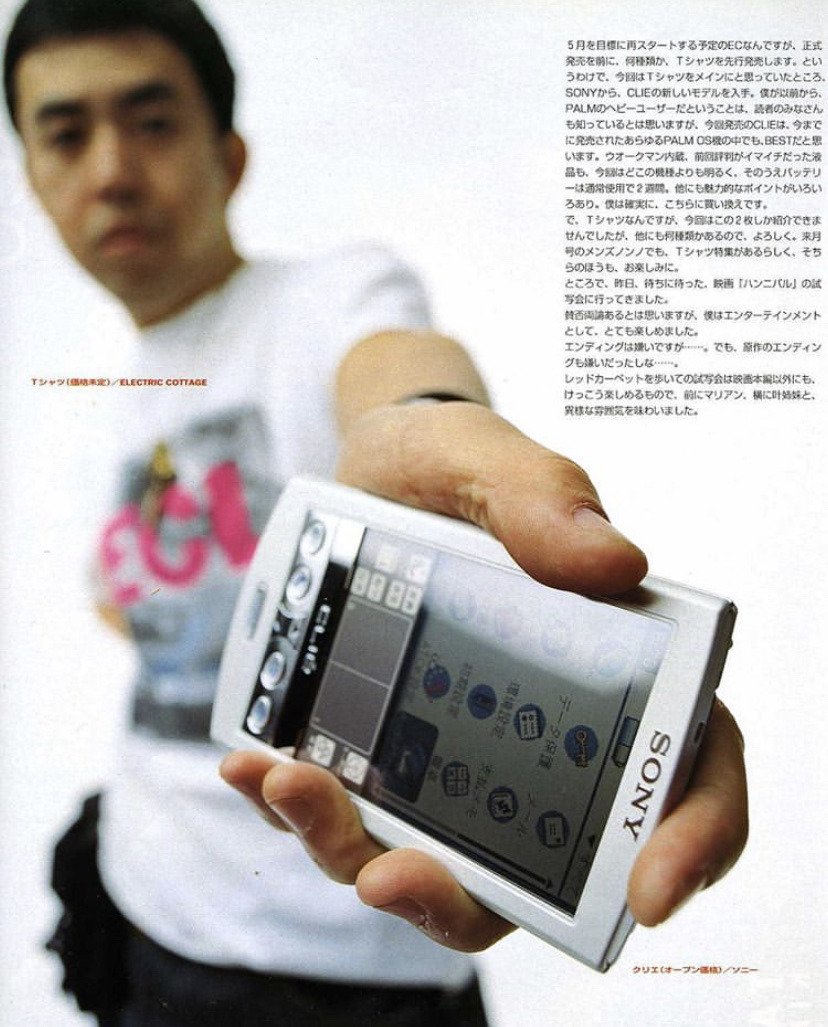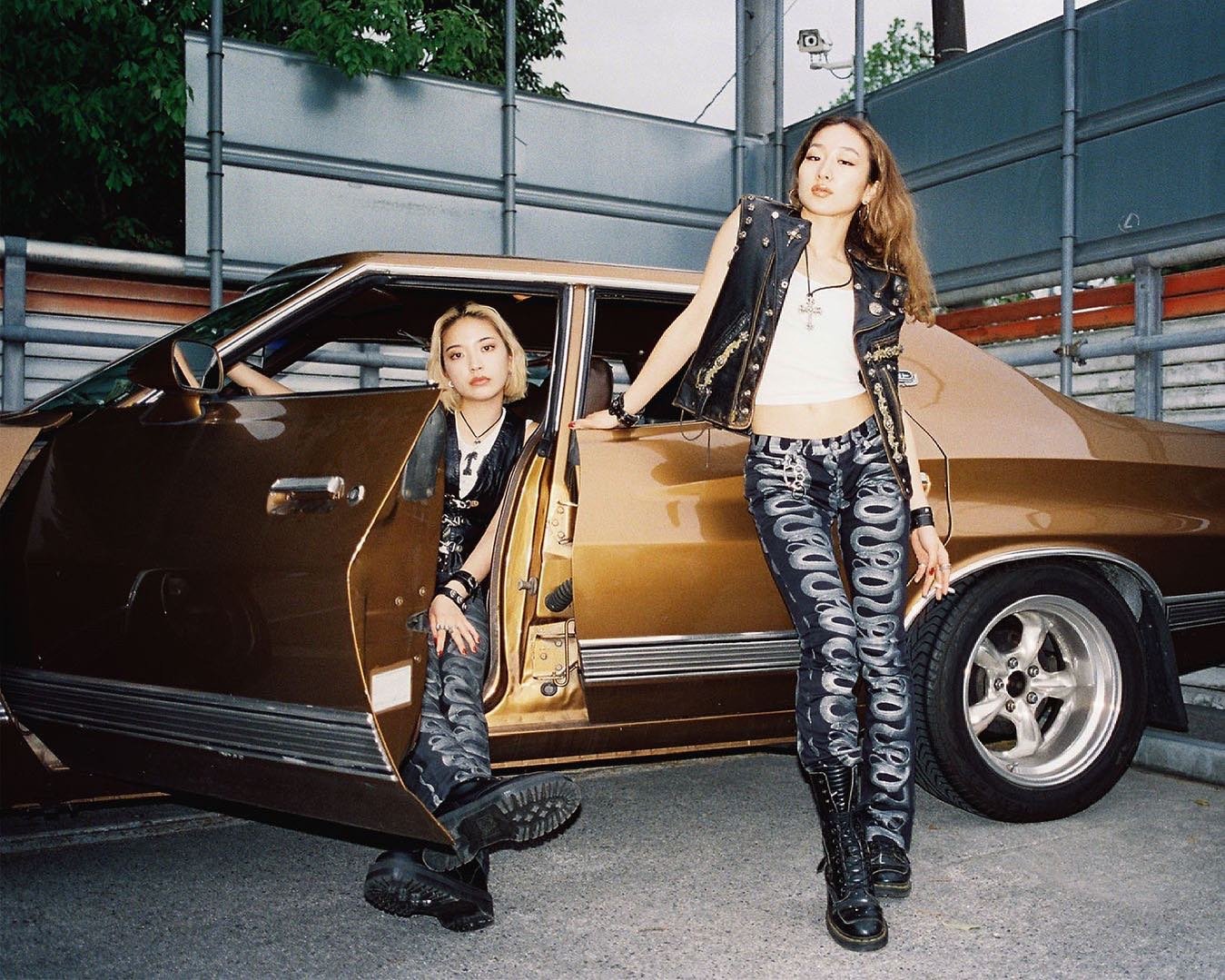HYSTERIC GLAMOUR - THE URAHARA TAKE ON AMERICANA

Americana is, beyond doubt, one of the most defining styles of modern Japanese fashion.
While the traditional interpretation of it creates a sleek and timeless but rather conservative look, Hysteric Glamour, a Japanese brand rooted in 60s and 70s American pop culture, has given Americana an update that made it ready for the youth counterculture emerging in 1980s Japan, and ultimately for the streetwear revolution of Ura-Harajuku in the 90s.
The story of Hysteric Glamour’s pop cultural referenced prints and bold graphics begins in 1984, when the brand was created by 21-year-old Nobuhiko Kitamura. As many Japanese teenagers, he had been fascinated by American punk and new wave in the late 70s, something that keeps inspiring his work until today. During his time at Tokyo Mode Gakuin Fashion School, he started working at Ozone Community, a creative label that itself deviated from conservative norms in Japanese clothing regarding cuts and silhouettes. After his graduation, he was offered by Ozone to create his own brand, what he did under the condition to be able to do it “his way”. The name “Hysteric Glamour” was decided combining “Patti Smith's hysterical stage presence and Blondie's Deborah Harry's glamorous feeling”, according to an interview Kitamura gave to Empty Room magazine.
Kitamura’s personal interests in 60s and 70s American mass media, vintage porn, rock and punk, pop art and comics form the very core of the whole brand, that had its first breakthrough after being featured in an issue of Olive Magazine which was very influential among Harajuku girls at the time (Hysteric Glamour was first intended to be a women’s brand). When making the leap to western markets with stores in the UK, Hysteric Glamour gained attention among the very people Kitamura used to idolize, like Mark Lebon or The Sex Pistols, now becoming customers and friends of his. Another great inspiration for Kitamura’s work was Andy Warhol, evidently one of the most prominent representatives of pop art, who died shortly before Kitamura would have had the chance to meet him personally. Nonetheless, Warhol’s legacy has found a way into Hysteric Glamours collections, having partnered up with the Andy Warhol foundation several times to bring his style onto wearable or usable canvas, like t-shirts or a suitcase collection.
Kitamura’s decision to turn his back to the commercialization that struck the generation of designers before him, like Issey Miyake, Rei Kawakubo or Yohji Yamamoto, who were participating in the so-called DC boom, made him essentially a part of the Urahara movement, even if he launched his brand about 10 years before it started. The approach of following his own sense of style instead of sticking to traditional fashion making rules gave Hysteric Glamour that attitude of being anti-fashion, being somewhat of a revolutionary thing at the time. Kitamura states that he had nowhere to look for orientation as he was the first one to do clothing as he did, so he turned to reading books. He paved the way for what there was to come within the next decades. His designs and conceptual approach focused on graphics, as well as his relations to American pop culture, fit in perfectly with all the small brands emerging in the early 90s Harajuku, while his choice of blank pieces is reminiscent of classic Americana, building a bridge to the past.
Until today, Hysteric Glamour has managed to stay relevant in its niche and true to its principles. The brand is a very active collaborator, having worked with several renowned partners over the last years, such as their recent second Supreme collaboration. The pieces will undoubtedly be highly sought after and provide some essential prints and motifs of Hysteric Glamour, including the snake jeans, pop art graphics, curse words and nudity. One of HG’s latest works is with tokyovitamin, a Tokyo based music and arts label, supported by the Duke of Harajuku and Verdy and includes heavily pop-art inspired motifs on classic pieces like a letterman jacket. The capsule is featured in the music video for “ICE CREAM” by Duke of Harajuku and LEX, of which the title has been an inspiration for the collaboration, too.
About the author:
Mark Gilcher interest mostly revolves around fashion, hip-hop and culture, but besides that, he also enjoys talking politics, social work and the great outdoors.







